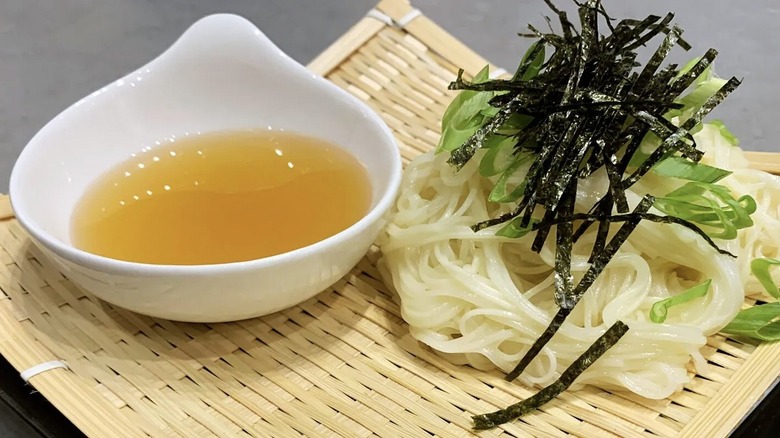This Is Andrew Zimmern's Go-To Summer Dish
Chef Andrew Zimmern may be the most accessible chef in the nation. Between his Instagram Live show "AZ Cooks – Learn How to Cook From Andrew Zimmern," answering questions on Twitter, or his blog, "Spilled Milk," the chef seems to have endless time and patience to connect with his audience. The four-time James Beard-winning chef is a TV personality, writer, and, most importantly to him, social justice advocate, according to his website.
When Zimmern isn't traveling for "Bizarre Foods" spinoffs, he's taking the lessons he's learned, along with the recipes, and introducing the rest of the world to new cultures through food. According to Eater, "Zimmern knows more about the foods of the world and the history of modern gastronomy than anyone else in our solar system. He's a walking, talking food encyclopedia and a true omnivore." A snapshot of Zimmern's recipes reads like an international food hall, representing many different cultures.
Although Zimmern tries to stay traditional when cooking, he does put his twist on recipes. Since some of his favorite recipes require a dozen ingredients, Zimmern advocates supporting local Asian markets or ordering from Amazon and H-Mart to stock your pantry. In a YouTube video, Zimmern shares his favorite dish when the weather soars above 80 degrees while providing the history and in-depth descriptions of the ingredients that go into this Japanese dish, all while connecting with his fans.
Andrew Zimmern's cold somen noodles
Zimmern's go-to dish in hot weather is cold somen noodles. Zimmern begins by preparing the tsuyu (dipping sauce). He first makes dashi, a seaweed stock used as the base for Japanese cooking, similar to western chicken stock. Zimmern then combines five additional ingredients to make the tsuyu and stores the sauce in the freezer to get it as cold as the noodles.
The star of the plate, somen noodles, are skinny, starchy wheat noodles. To remove the starch, somen noodles should be cooked in boiling water for a minute before plunging in an ice bath to shock the noodles and rinse off the starch. Zimmern compares this technique to washing your hands covered in flour. If you wash in hot water, you will activate the gluten in the flour and create a paste versus washing your hands in cold water and rinsing the flour right off. Home cooks can rinse the noodles under cold water; however, Zimmern warns that the results won't be the same since tap water can't get as cold as ice water. The result, according to Zimmern, is chewy, dense, bouncy noodles.
To plate the somen, Zimmern piles the noodles finished with shaved nori and scallion on a traditional noodle mat with a bowl of dipping sauce. Alternatively, the noodles can be placed in a bowl with some sauce poured on it. Zimmern recommends serving the dish as is, resisting adding protein. Instead, he serves somen as a starter with another course.

